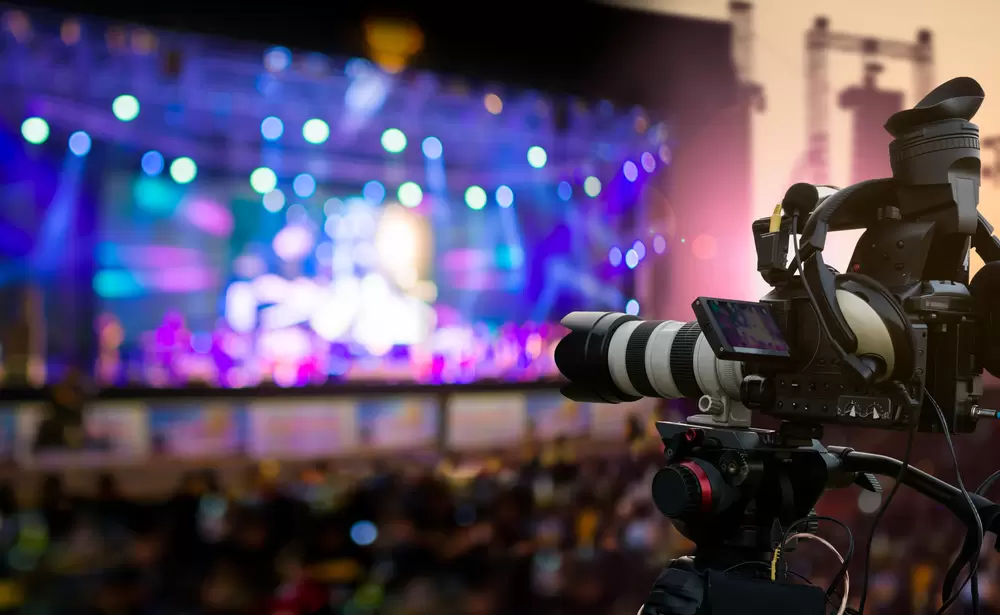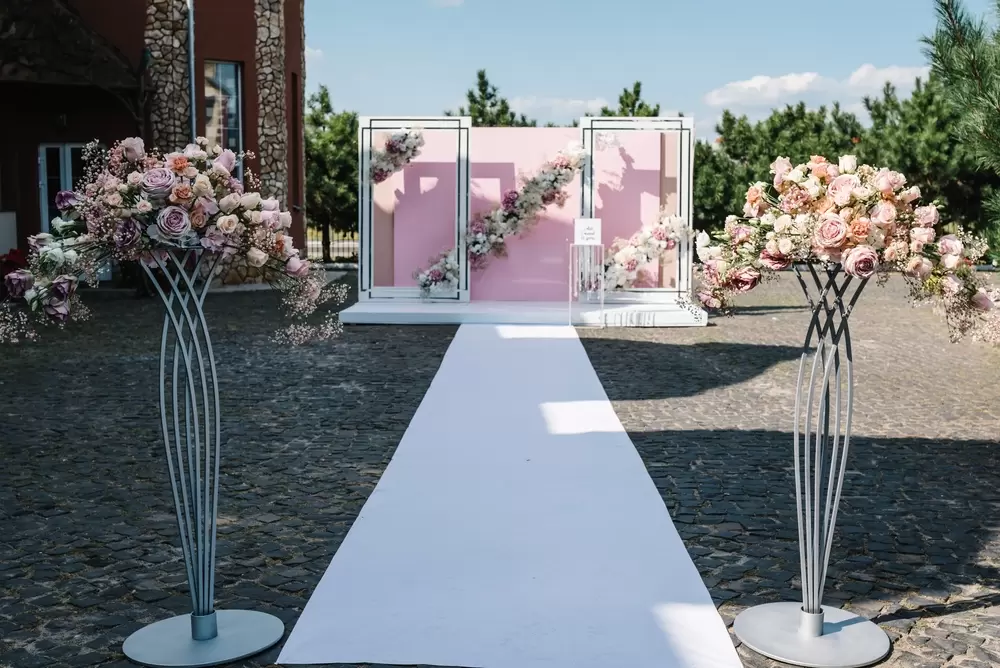Go Live! Easy Steps to Live Event Video Production
In today’s digital age, live events have transcended physical boundaries, reaching global audiences through the power of live event video production. Whether it’s a conference, concert, wedding, or sporting event, going live allows you to connect with viewers in real-time, creating an engaging and immersive experience. However, the thought of live video production can seem daunting to many.
Don’t Stress! We’ve broken down the process into easy, manageable steps to help you navigate the world of live event video production like a pro.

Step 1: Pre-Planning Your Live Event
1. Define Your Objectives: Start by clearly defining the purpose of your live event. Are you aiming to educate, entertain, or engage your audience? Your objective will guide every decision you make from here on out.
2. Know Your Audience: Understanding your target audience is crucial. Consider their interests, demographics, and the platforms they frequent. This will help you tailor your content and choose the right platform for broadcasting.
3. Select the Right Equipment: Depending on your budget and the scale of your event, your equipment needs may vary. At a minimum, you will need a reliable camera, microphones, a stable internet connection, and a computer or hardware encoder for streaming. Consider renting professional equipment if your budget allows.
4. Choose a Streaming Platform: There are numerous platforms for live streaming, including YouTube Live, Facebook Live, Twitch, and professional services like Vimeo. Select a platform that aligns with your audience’s preferences and your event’s needs.
Step 2: Preparing for Your Live Event
1. Scout Your Location: The location of your event can significantly impact your live event video production. Assess the venue for lighting, acoustics, and internet connectivity. Ensure there’s ample space for your equipment and crew.
2. Plan Your Content: Outline the flow of your event. If it includes multiple segments or speakers, consider creating a detailed run sheet that includes timings, speaker names, and any special instructions. This will help keep your event on track.
3. Conduct a Technical Rehearsal: This is a critical step that should not be overlooked. Test your equipment, streaming connection, and any multimedia presentations to iron out potential issues before going live.
4. Promote Your Event: Use social media, email newsletters, and other channels to promote your event. Provide clear instructions on how to access the live stream and consider creating a countdown to build anticipation.
Step 3: Going Live
1. Set Up Early: On the day of the event, arrive early to set up your equipment and conduct a final run-through. This will give you ample time to adjust if anything doesn’t go as planned.
2. Monitor Your Stream: Once live, continuously monitor your stream for quality and address any issues promptly. It’s helpful to have someone dedicated to this task so the main production team can focus on the event.
3. Engage With Your Audience: Encourage viewer participation through live chats, Q&A sessions, or polls. Engagement can significantly enhance the viewer experience and keep your audience interested.
4. Have a Contingency Plan: Despite thorough preparation, live events can be unpredictable. Have backup plans for critical components like power supply, internet connectivity, and equipment.
Step 4: Post-Event Activities
1. Analyze and Learn: Most streaming platforms provide analytics on viewer engagement, peak viewing times, and other valuable data. Analyze this information to understand what worked well and what can be improved for future events.
2. Follow Up: Thank your audience for attending and follow up with any post-event materials, such as recordings of the live stream, additional resources, or answers to unanswered questions during the event.
3. Repurpose Your Content: Consider repurposing your live content into smaller video segments, blog posts, or social media content to extend the life of your event and continue engaging your audience.

How to do live event video production?
Live event video production requires meticulous planning, coordination, and execution to ensure a seamless and engaging live broadcast. Here’s a comprehensive guide on how to carry out live event video production, from pre-production planning to post-event wrap-up.
Pre-Production
1. Select a Streaming Platform: Understand the purpose of your event and who your target audience is. This will guide decisions on content, platform choice, and marketing strategy.
2. Select a Streaming Platform: Choose a platform that suits your audience’s preferences and the technical requirements of your event. Popular options include YouTube Live, Facebook Live, Twitch, and professional services like Vimeo Livestream.
3. Site Survey and Technical Scouting: Visit the venue to check the layout, lighting, acoustics, and internet connectivity. Identify potential challenges and solutions, like additional lighting or sound equipment.
4. Equipment Checklist: Ensure you have all necessary equipment, including cameras, microphones, audio mixers, encoders, and tripods. Consider renting high-quality gear if you don’t own it.
5. Plan Your Content: Outline the event schedule, including any speeches, performances, or segments. Plan camera angles and transitions to ensure smooth coverage of the entire event.
6. Assemble Your Team: A successful live production requires a skilled team, including a director, camera operators, sound engineers, and a streaming technician.
Production
1. Set Up Early: Arrive at the venue well before the event starts to set up and test your equipment. This gives you time to troubleshoot any issues.
2. Conduct a Technical Rehearsal: Test all equipment, including cameras, microphones, and the streaming setup. Make sure all team members know their roles and the event flow.
3. Monitor Audio and Video Quality: Continuously check the sound and video quality throughout the event. Be prepared to adjust microphone levels and camera angles as needed.
4. Engage with the Audience: Use live chat, polls, and Q&A sessions to interact with viewers. Assign a team member to monitor and respond to audience comments.
5. Be Ready for the Unexpected: Live events are unpredictable. Have backup equipment ready, and be prepared to adapt to changes in the event schedule or technical issues.

Post-Production
1. Debrief and Analyze: After the event, gather your team for a debrief session. Discuss what went well and what could be improved for future events.
2. Edit the Recording: If you recorded the live event, consider editing the footage to highlight key moments or to correct any issues. You can then share the edited version on your website or social media channels.
3. Analyze Performance: Review analytics from your streaming platform to understand viewer engagement, peak viewing times, and audience demographics. Use this data to improve future live events.
4. Follow Up with Your Audience: Thank viewers for participating. Consider sending a follow-up email with a survey, links to the event recording, or promotional material for future events.
Conclusion
Live event video production opens up a world of opportunities to connect with a broader audience in a dynamic and interactive way. By following these easy steps, you can ensure a successful live streaming experience that captivates and engages. Remember, the key to a great live event is not just in the technology or production value, but in your ability to tell a compelling story and create a meaningful connection with your viewers. With careful planning, preparation, and a touch of creativity, you’re well on your way to making your live event a resounding success. Happy streaming!
Go Live! Easy Steps to Live Event Video Production Read More »





